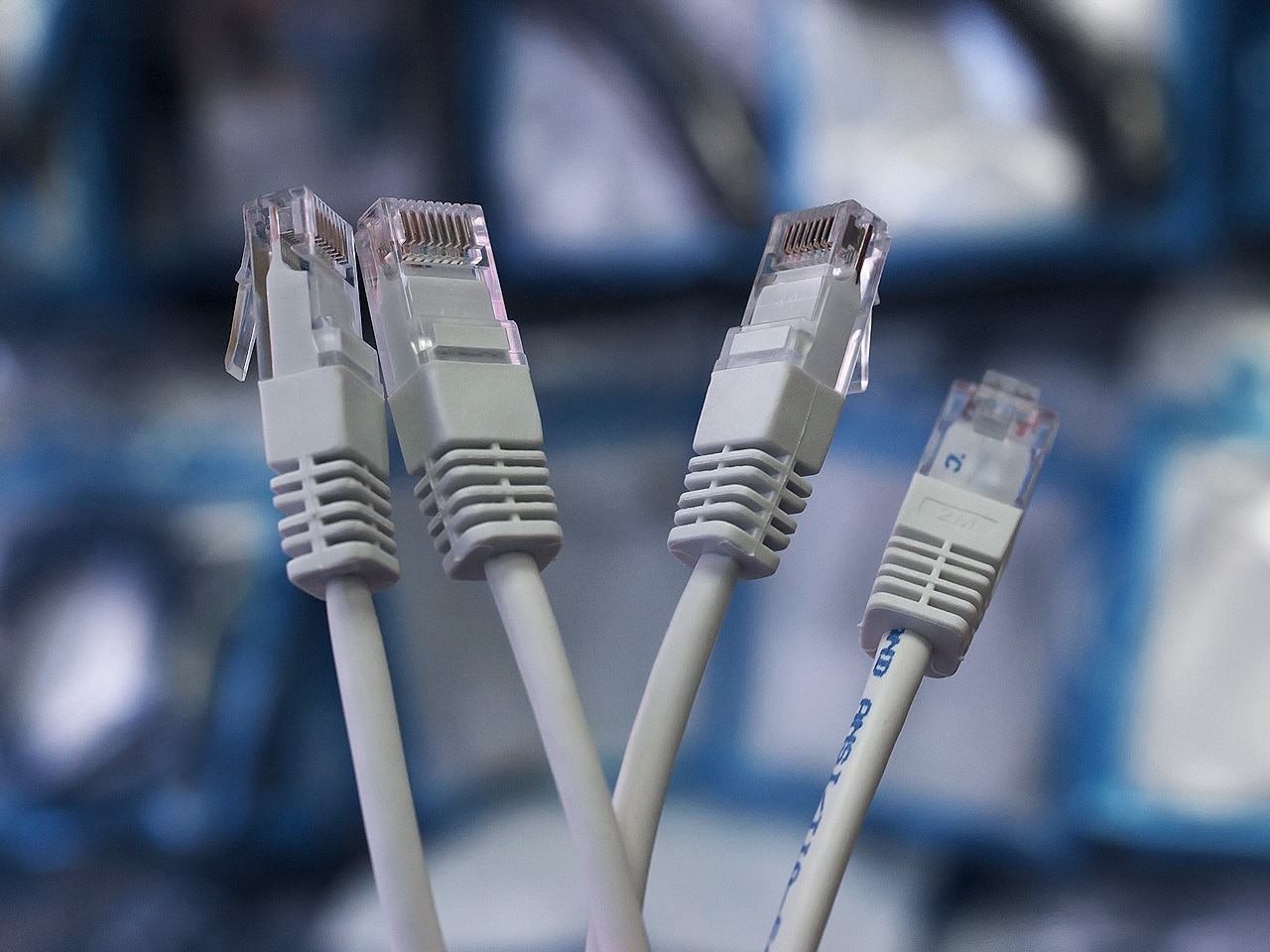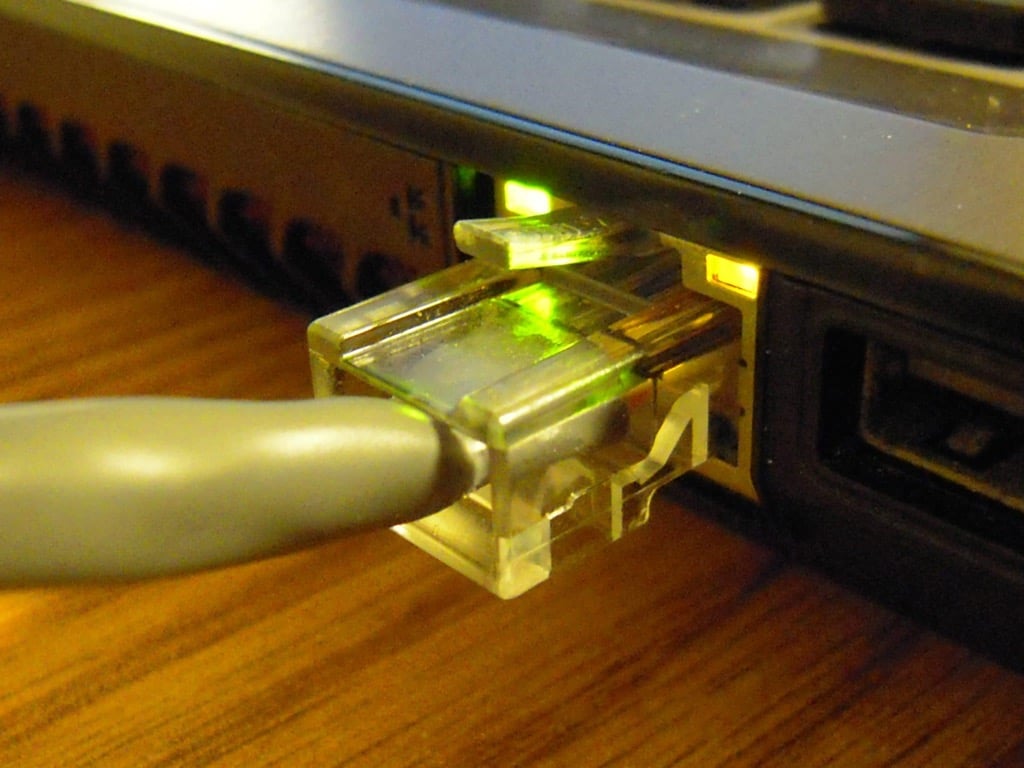- An Ethernet connection is more stable and faster than a Wi-Fi network.
- Setting up a wired network in Windows 11 requires following some essential steps.
- There are several solutions for common connectivity problems on Ethernet networks.

If you have decided to use an Ethernet connection on your computer with Windows 11, you may face some difficulties during setup or troubleshooting. Even though it may seem simple, setting up a wired network and ensuring it works properly requires following certain steps. In this guide, we will cover the entire process, from initial setup to some common solutions for connectivity issues.
Ethernet is one of the most reliable ways to ensure a stable internet connection on your PC. Not only is it faster than Wi-Fi in many cases, but it also eliminates interference issues that sometimes appear on wireless networks. If you're wondering how to set up your Ethernet on Windows 11 and fix common issues, follow these steps and tips!
Steps to configure an Ethernet network in Windows 11
If you're ready to get set up, follow these detailed steps to make sure everything works properly right from the start.
- Right click on the network icon: The first thing you need to do is right-click on the network icon in the taskbar. Depending on the status of your connection, this icon may vary. You might see a Wi-Fi network access icon or an icon indicating that you do not have Internet access.
- Access the network settings: After clicking on the icon, select the option Network and Internet Settings. This will take you to a panel with all the settings related to your Internet connection.
- Operating system: Make sure you're selecting the correct settings for your version of Windows. Instructions vary depending on whether you're on Windows 10 or Windows 11, but both versions have similar menus.
- Set up a new connection: Once inside, select the option Set up a new connection or network. This option will allow you to start the process to connect your computer to the network using the Ethernet cable.
- Connect to the Internet: Select option Connect to the Internet and then choose the option that indicates Broadband (PPPoE)This is the common option for most cable Internet providers.
- Enter your credentials: If your Internet Service Provider requires a username and password, now is the time to enter them. Typically, your provider will have provided you with this information when you signed up for service.
- Connection successful: If all went well, you should see an indication that your connection has been configured correctly. Additionally, the network icon in the taskbar should change to show that you are connected via Ethernet.
Tips for troubleshooting Ethernet network problems on your PC

Sometimes your Ethernet connection won't work as expected despite following the steps above. Fortunately, there are some additional steps you can take to fix these common problems.
- Restart your modem and router: A simple but effective solution is to restart both devices to reestablish the connection. Unplug both your modem and router from power for about 10 seconds, then plug them back in. Afterwards, wait for the connection lights to stabilize before attempting to reconnect your PC.
- Check the hardware: Make sure the cable is properly connected to both your PC and the router. If you have a USB port, USB-C, you may need an Ethernet adapter. Also, check that the devices are receiving power.
- Update your drivers: Make sure you have the latest drivers for your network adapter. If you don't have an Internet connection on your PC, use another device to download them from the manufacturer's website and transfer them via USB.
- Try another Ethernet port: If the port on your PC or router is damaged, you may experience connectivity issues. Try using a different port on both your router and PC if possible.
- Run the troubleshooter: Windows 11 has a built-in troubleshooter. Go to network settings and select the option Solve problems. This will run a series of automatic diagnostics that may correct problems on your network.
Tips to optimize your Ethernet connection
If you've already managed to connect, there are always ways to optimize your network to get the best possible performance.
- Make sure your network adapter is set to work at its maximum performance. This may include checking speed and duplexing settings in your network adapter settings.
- If possible, try to use a Category 6 or higher Ethernet cable for the best speed and stability possible.
- Update your router's firmware. Sometimes connection problems aren't related to your PC, but to the router. Check to see if the manufacturer has released firmware updates.
Finally, if you find that the Ethernet connection is still problematic despite these steps, you may want to consider using a USB to Ethernet adapter or even connecting to a cellular network, if your device supports it, as a temporary solution.
In short, by properly configuring your Ethernet network and taking into account the steps mentioned above, you can ensure a stable and fast connection on your Windows 11 PC. Although problems can sometimes arise, there are usually easy solutions to solve them and ensure that your network works optimally.
I'm Alberto Navarro and I'm passionate about everything related to technology, from cutting-edge gadgets to software and video games of all kinds. My interest in digital began with video games and continued in the world of digital marketing. I have been writing about the digital world on different platforms since 2019, sharing the latest news in the sector. I also try to write in an original way so that you can stay up to date while having fun.
I studied Sociology at university and completed my studies with a Master's in Digital Marketing. So if you have any questions, I'll share with you all my experience in the world of digital marketing, technology and video games.